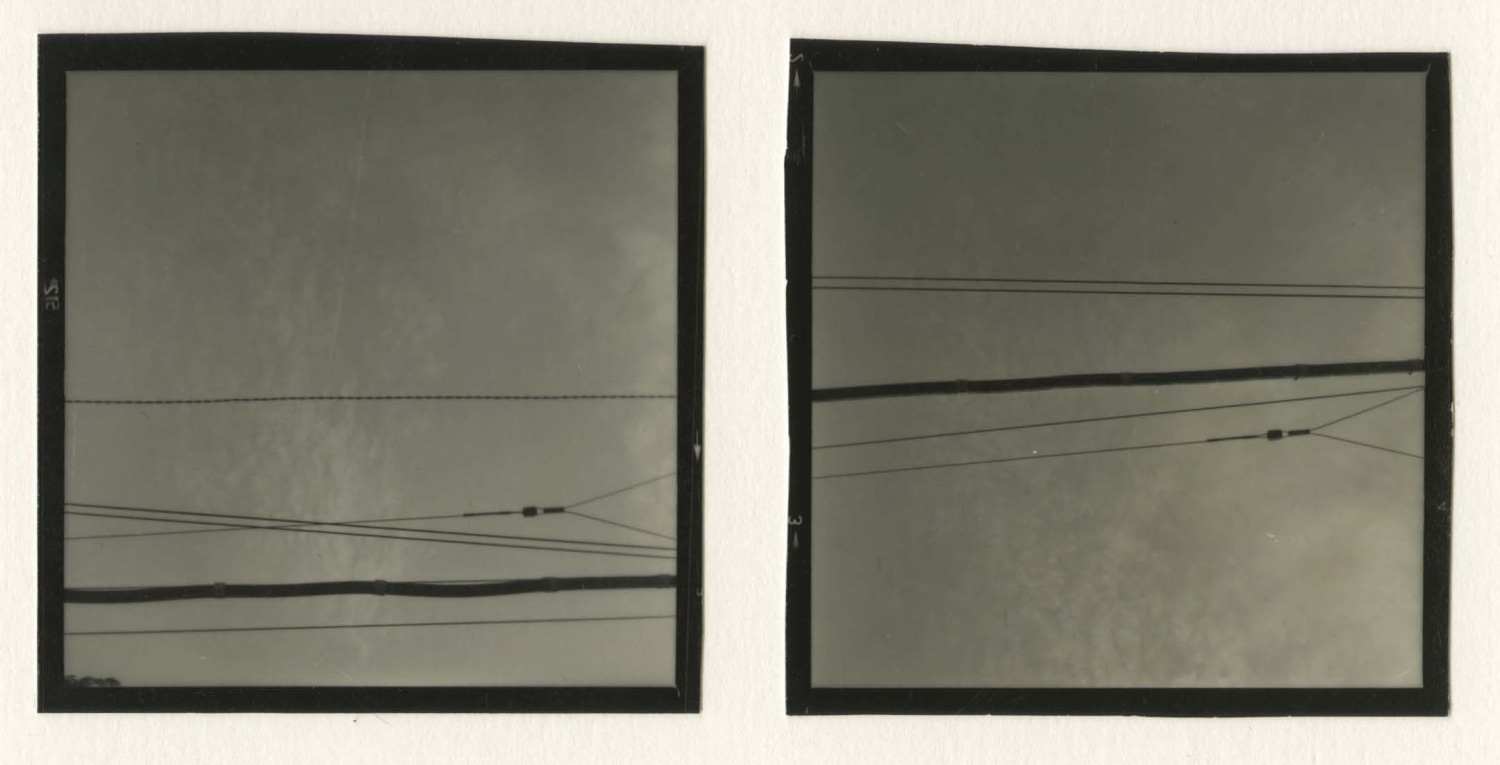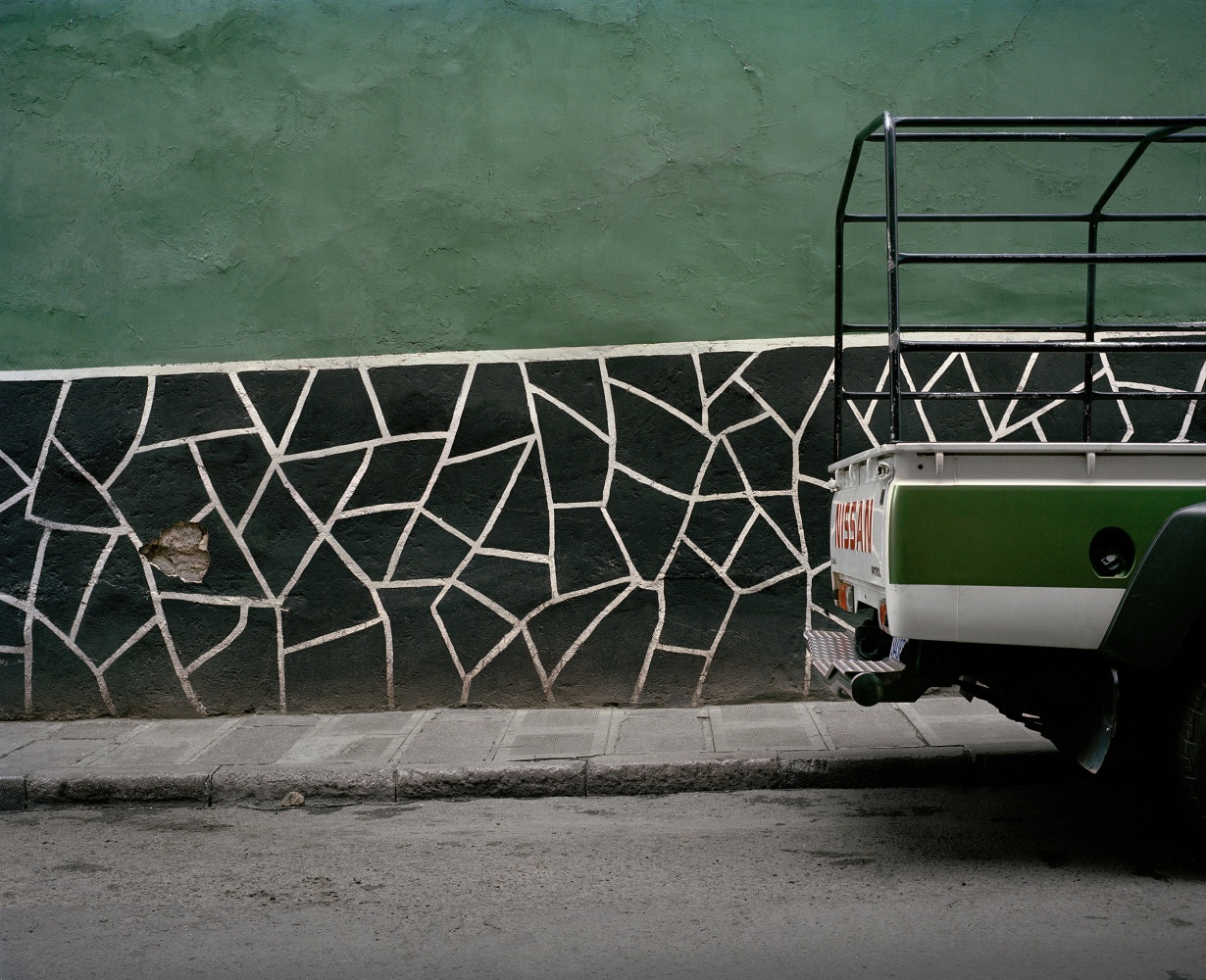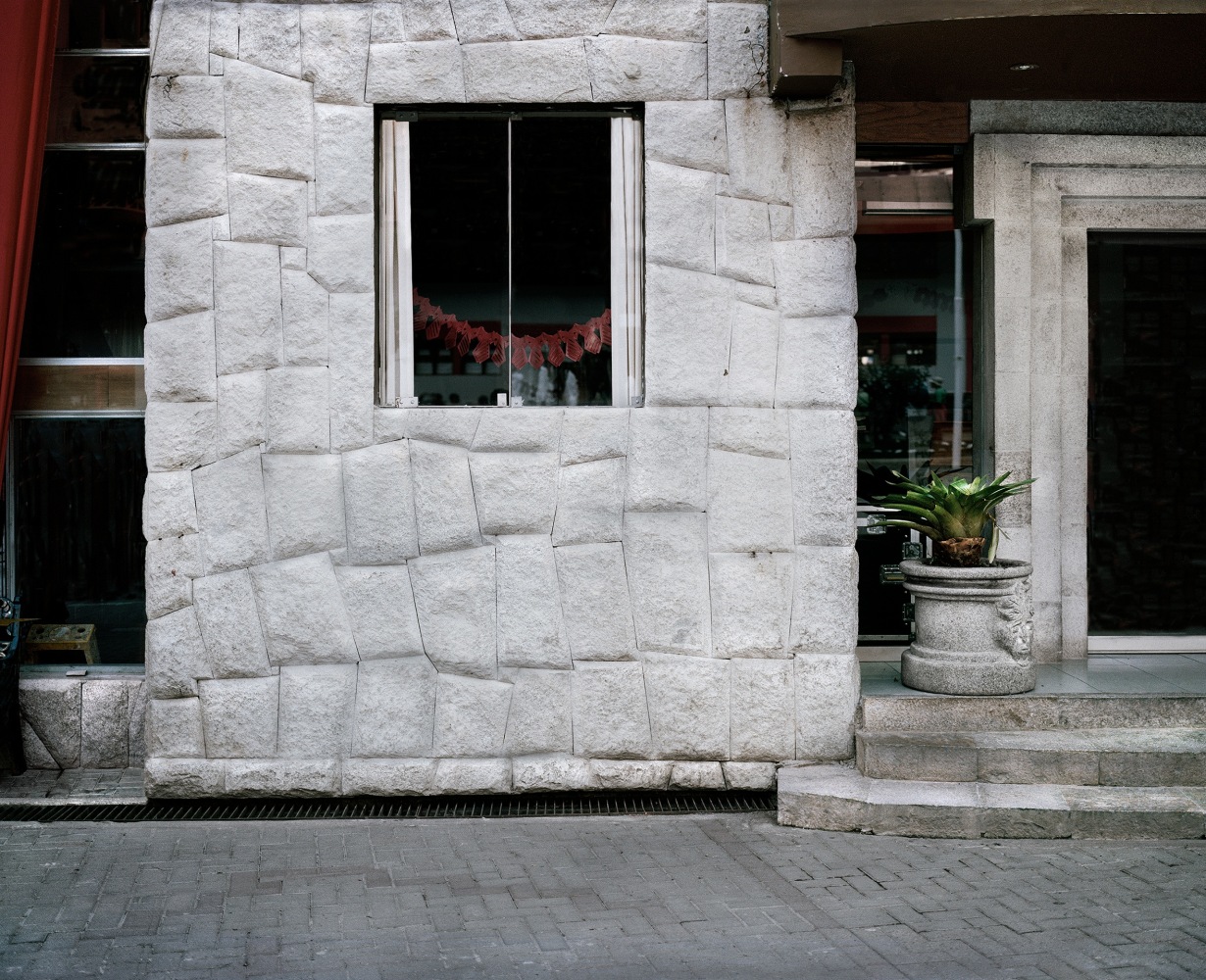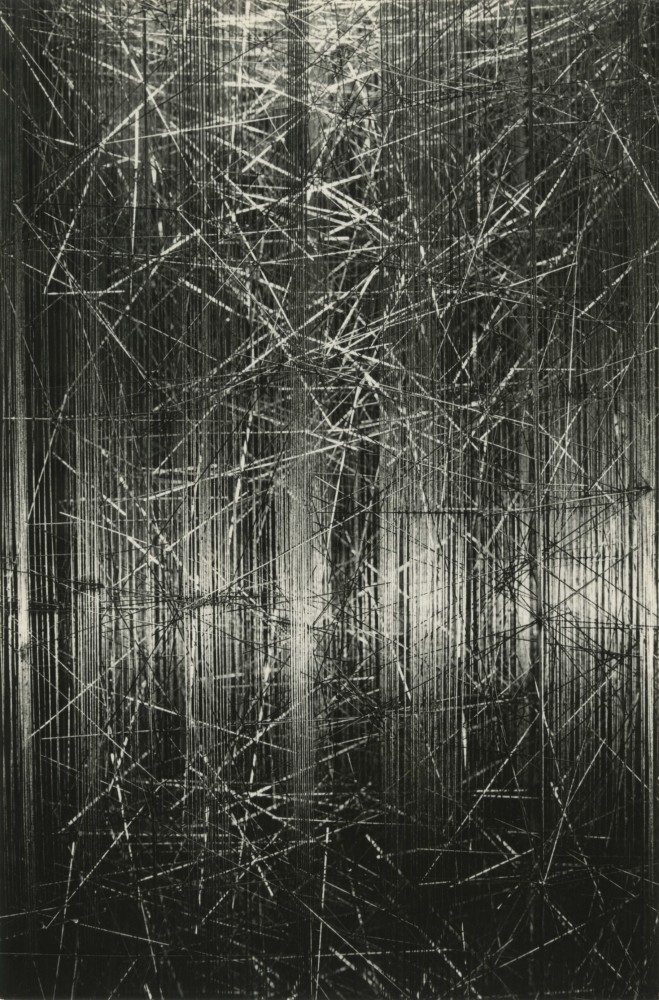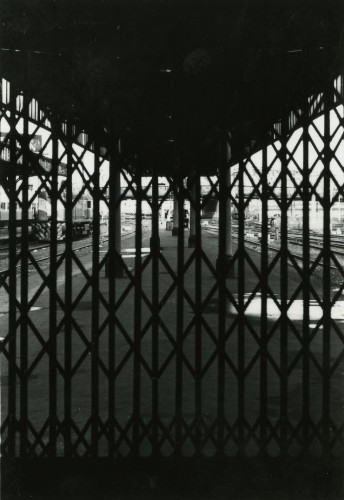Curated by Alexis Fabry
The gallery is pleased to present Lineas y Piedras, an exhibition including works by León Ferrari, Jorge Ortiz, Facundo de Zuviría, and Pablo Lopez Luz. The exhibition brings together a selection of photographs showcasing the presence of geometric spaces, masses with heavily contoured outlines, and the weight of Pre-Hispanic architecture - documenting urban landscapes through a Latin American lens. It is tempting to compare the tandem made up of León Ferrari and Jorge Ortiz, to that of Facundo de Zuviría and Pablo López Luz. The former trace in the void a movement of lines and signs, while the latter are more attached to the matter inscribed in architectural solids, in stone, or whatever stands in for it.
The accumulation of metallic strokes in the photographs of León Ferrari creates a dizzying density within a carefully framed fabric. Having fled the Argentine military regime in 1976, Ferrari emigrated to Brazil. There, installed in a spacious workshop, he returned to works in steel sculpture in the semi-abstract vein of the early 1960s, which he then proceeded to photograph methodically. León Ferrari (1920-2013, Buenos Aires) is considered among the most significant artists working in Latin America during the second half of the twentieth century. He studied electrical engineering before becoming one of the foremost pioneers of conceptual art in Argentina. Ferrari’s work has been widely exhibited internationally. In 2007, he was awarded the Golden Lion at the 52nd Venice Biennial. Selected exhibitions include: MALBA, Buenos Aires (2012); Museum of Modern Art, New York (2009); Museum of Fine Arts, Houston (2004); Museo Nacional Centro de Arte Reina Sofía, Madrid (2000). His work is included in prominent public and private collections including: the Museum of Modern Art, NY; Reina Sofia, Madrid; Museo de Arte Contemporaneo, Buenos Aires; Museo de Arte Moderno, Mexico; Museum of Fine Arts, Houston; Museo de Arte de São Paulo; Museo de Arte Moderno de Rio de Janeiro; Daros Latinamerica, Zurich; the Cisneros Collection; Tate Modern, London; The Bronx Museum of the Arts, NY; the Blanton Museum of Arts, Austin, TX.
In the high-tension wires and electric cables that he photographs in black-and-white against a neutral sky, Jorge Ortiz doubtlessly sees much more than abstract compositions. “Black-and-white,” he says, “is like yes and no. Greys are the doubts of photography.” Thus, the electrical network generates images, almost signs, like line engravings. Ortiz (b.1948, Medellín) often documents Colombia using light and time as his primary materials. His work has been included in international biennials and exhibitions such as the Bogotá Biennial (1988), La Havana Biennial, Cuba (1986), and the Sydney Biennial, Australia (1982), Museum of Modern Art of Bogotá, CO (2004), FOTOFEST, Houston (1992). Public collections include: Museum of Modern Art of Bogotá, Museum of Modern Art of Medellín, Museum of Modern Art, Cartagena de Indias, Museum of Fine Arts, Caracas, and the Art Gallery of Western Australia.
Facundo de Zuviría willingly acknowledges the importance of the city of Buenos Aires in his work, and of certain aspects of the urban landscape that have always interested him - such as store windows, mannequins, façades, architectural details, graffiti, and street signs. Color divides and imposes itself, whereas black-and-white renders things abstract, uniform. Zuvría’s (b. 1954, Buenos Aires) photo-essay, Siesta Argentina, is concurrently on view at Americas Society, NY through April 1, 2017. He has published many books including Estampas Porteñas (1996), Siesta Argentina (2003) and Paraná ra’angá (2013) and has shown in international biennials including Mercosur Biennial (2000) and Sao Paulo Biennial (1991). Other recent exhibitions include: International Center of Photography, NY (2014); Museo Amparo, Puebla, Mexico (2014); Lasar Segall Museum, Sao Paulo (2014); Museo Colección Fortabat, Buenos Aires (2014); and Fondation Cartier, Paris (2013). The National Museum of Fine Arts in Buenos Aires awarded him with the Konex Award twice (1992, 2012) and Leonardo Award (1996). His works are included in public collections such as the Museum of Fine Arts, PROA, MALBA, Museum of Modern Art in Buenos Aires, Fondation Cartier, Fondation Hermes, and the National Library in Paris.
In the settlements that have sprung up around tourist destinations in Peru, Pablo López Luz photographs the façades and thresholds of houses and buildings adorned with stucco reliefs of inverted pyramids, concentric rectangles, and other Inca motifs. The visual repertory reflects the local taste for these Inca designs and shows how they are inserted into the urban context, grafted on to it and brought up to date. Lopez Luz( b. 1979, Mexico City) explores the symbiotic relationship of man and his environment attempting to reinterpret the concept of traditional Mexican landscapes. After studying at the the Universidad Iberoamericana in Mexico City, he completed an MFA at NYU in 2006. Select exhibitions include: SFMOMA, CA; Fondation Cartier, Paris; Sommerset House, London; Museum of Modern Art, Mexico City; Musee Quai de Branly, Paris; Insittuto Cervantes, Madrid; Palace of Fine Arts Museum, Mexico City; Centro Fotográfico Alvarez Bravo, Oaxaca, MX; among others. His works are included in collections of SFMOMA; the Perez Museum, Miami; The Bank of New York Mellon; Stanislas Poniatowski Photography Collection, and Museum of Modern Art (Mexico).

